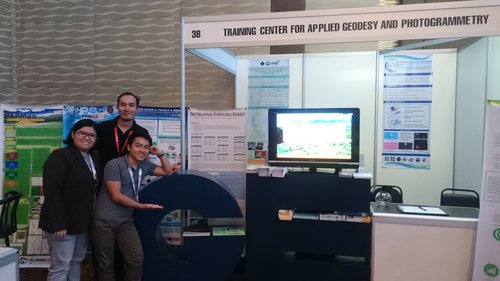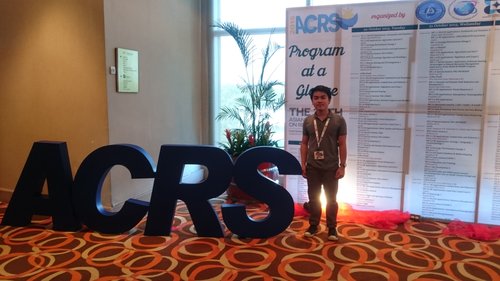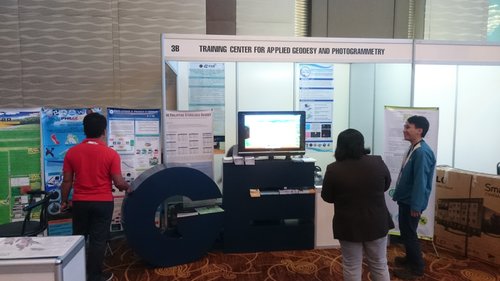MARINE SPATIAL PLANNING TOOL
MSP TOOL
WebGIS Platform for tidal in-stream current energy development
About PhilSHORE
Philippine Sites for Harnessing Ocean Renewable Energy
Also known as Tidal Current Energy Integrated Resource Assessment and Marine Spatial Planning, this project is a collaborative effort of the Philippine Council for Industry, Energy and Emerging Technology Research and Development, Department of Science and Technology (PCIEERD-DOST); University of the Philippines Diliman (UPD) - Department of Geodetic Engineering (DGE) through Training Center for Applied Geodesy and Photogrammetry (TCAGP), Department of Mechanical Engineering (DME), and Marine Science Institute (MSI); and the Renewable Energy Management Bureau, Department of Energy (REMB-DOE).
Through application of Geographic Information Systems (GIS), Project PhilSHORE aims to identify the country’s potential sites for conversion of tidal current energy and at the same time, develop a webGIS-based marine spatial planning (MSP) tool for site analysis.
It is hoped that this Project will lay the groundwork for the advancement of ocean renewable energy in the Philippines. This is in support to the DOE’s target of having the first ocean energy facility by 2018 and increasing ocean power capacity to 70.5 Megawatts by 2025.
As set forth in the 2012-2030 Philippine Energy Plan and the National Renewable Energy Program (NREP) Consolidated Renewable Energy (RE) Roadmap, this aggressive attempt of the government to accelerate the exploration and development of ocean energy is cognizant of the concerns on achieving energy security of the country in the years to come. Considering the constant increase of oil price in the world market and the high economic risk of growing fuel dependence on foreign countries, coupled with the pressure of climate change, the Philippines is prompted to look for alternative sources of energy, such as ocean energy.
Ocean renewable energy, which includes tides, waves, tidal stream, ocean currents, thermal gradients, and salinity gradient, represents a significant resource for clean renewable electricity generation. To date, only the tidal barrage has reached commercial maturity and is being used in the United Kingdom. Thermal and salinity gradient technologies have not reached the pre-commercial maturity level. Ocean thermal energy conversion (OTEC) technologies are still very expensive and the lack of pilot sites with installed power systems harnessing this type of energy pulled away support from a number of investors worldwide. On the other hand, wave energy conversion (WEC) and tidal current energy (also known as tidal in-stream energy conversion or TISEC) systems have reached full-scale and are in the pre-commercial scales of maturity. When compared, tidal energy resource is considered more predictable and consistent than wave energy resource.
Tidal current energy is a form of energy that arises when streams of water flow between landmasses as a result of tidal height differences. Sites where available tidal current energy occurs in large quantities are those sites where the flow is constricted, resulting in higher current stream velocities. These properties are exhibited by channels and straits which can be found in many areas in the Philippines considering that the country is an archipelago surrounded by vast ocean.
Hence, this Project will assess these potential sites for tidal current energy conversion. Among the outputs of this Project are resource (power and energy density) maps and suitability maps with considerations on physical, environmental, and socio-economic constraints. With these, potential sites for each device (site-device matching) will be identified. At the end of the Project, a webGIS-based MSP tool will be made available.
Launched on April 16, 2014, PhilSHORE is a PCIEERD-DOST funded initiative which will run for two years. It is led by Engr. Ma. Rosario Concepcion O. Ang, Assistant Professor, UPD-DGE. Assisting her as Project Staffs are Dr. Laura T. David, Professor, UPD-MSI; Dr Louis Angelo M. Danao, Assistant Professor, UPD-DME; Ma. Elena C. Ignacio, Administrative Officer, UPD-DGE; and Mr. Mario C. Marasigan, Director, REMB-DOE. PhilSHORE is stationed at the Applied Geodesy and Space Technology (AGST) Research Laboratory, MH 406, College of Engineering, University of the Philippines, Diliman, Quezon City.


